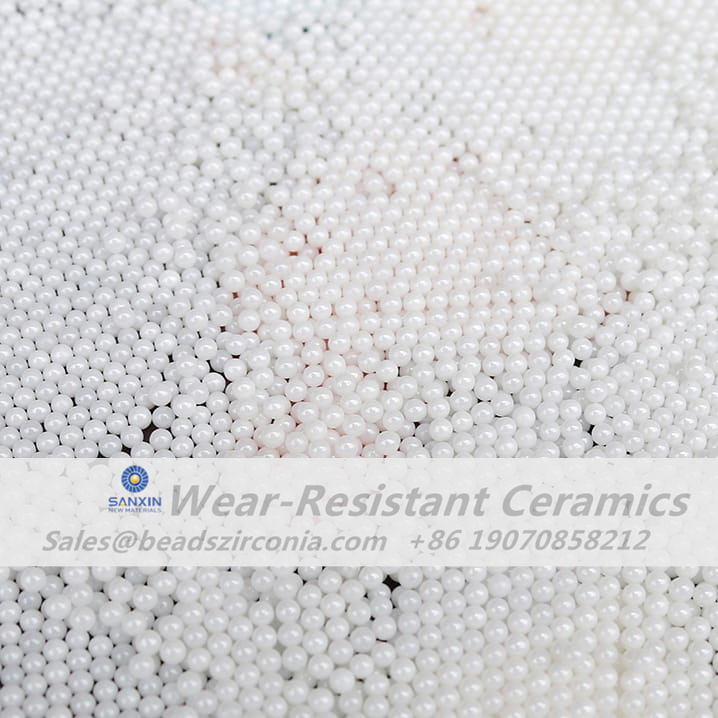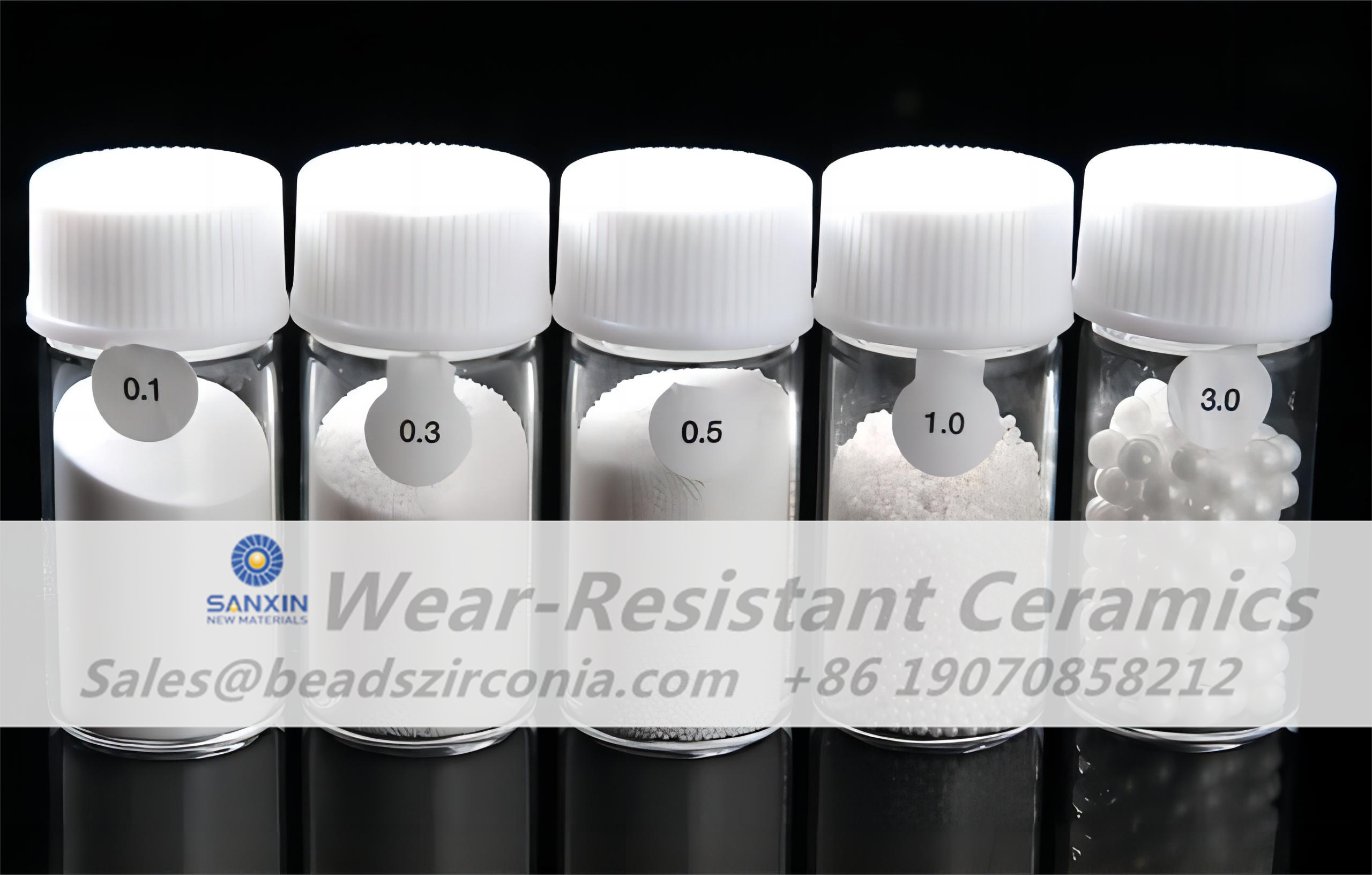Maximizing Efficiency in Cement Grinding: Is Ceramic Media the Answer?

In cement production, the grinding process is essential to achieve the fine particle size necessary for cement's desired performance properties. As one of the most energy-intensive steps, this stage plays a vital role in overall cost and quality control. Traditionally, steel balls have been the standard media in cement mills, providing a high-impact force required for particle reduction. However, with increasing pressure for cost-effective and sustainable practices, alternative media like ceramic balls have come into consideration.
Ceramic media is being hailed for its potential to lower operational costs and extend equipment life. However, the transition is not without its challenges. This article takes a closer look at ceramic grinding media, including their properties, benefits, and the potential issues they may present. Finally, we will discuss best practices, case studies, and explore the products and expertise offered by leaders in this field, such as Sanxin New Materials Co., Ltd., a company specializing in ceramic milling balls, wear-resistant ceramics, and abrasion-resistant materials.
Ceramic grinding media, especially those manufactured from high-grade alumina, possess unique properties that differentiate them from traditional steel balls:
High Hardness: Ceramic balls, particularly those made from alumina, have a Mohs hardness rating of 9, making them almost as hard as diamonds. This hardness translates to increased durability and abrasion resistance.
Low Density: Ceramic media has a lower density compared to steel. This lighter composition can mean reduced energy requirements in some grinding processes, particularly those that prioritize low-energy impact over forceful crushing.
Corrosion Resistance: Unlike steel media, ceramic balls are resistant to corrosion. This resistance is especially valuable in moist or chemically reactive environments where steel might rust or degrade, affecting cement purity.
Reduced Heat Generation: Ceramic media generates less heat during grinding compared to steel. This feature can help maintain stable temperatures in the grinding chamber, protecting both the equipment and the quality of the cement.
Environmental Benefits: Ceramic media is inherently more durable, leading to less frequent replacement. This reduction in waste aligns well with industry sustainability goals and can reduce costs in the long term.
Despite the many benefits, some cement producers have reported challenges when using ceramic media in large-scale cement milling operations. Common issues include:
Breakage Rates: Although ceramic media is hard and wear-resistant, it is also brittle, meaning that in high-impact situations, it can break. The breakage rate for ceramic balls is higher than for steel, which can lead to increased operational costs and unexpected downtime.
Reduced Production Efficiency: Due to its lighter weight, ceramic media can struggle to achieve the impact forces required for effective grinding in cement applications. In some cases, this reduced efficiency can lead to slower production rates.
Initial Cost Investment: Ceramic media tends to be more expensive than steel. Although the potential for long-term savings exists, the higher upfront cost can be a barrier for some facilities.
Compatibility with Existing Equipment: Ceramic media is not a simple drop-in replacement for steel. For effective use, adjustments to the mill's configuration, feed method, and even material properties may be necessary.
Given these challenges, successful use of ceramic grinding media requires a detailed understanding of both the material properties and the operational requirements of cement milling.
To better understand the applicability of ceramic media, it’s useful to compare it to steel grinding media in terms of performance, cost, and environmental impact.
Steel Media: Steel balls provide high impact strength, which is ideal for crushing and grinding raw materials like clinker. Their density creates the high-impact forces necessary for efficient grinding in large cement mills.
Ceramic Media: Ceramic balls are better suited for fine or medium-fine grinding, where their hardness and wear resistance can be advantageous. However, due to their lower density, they may underperform in applications requiring significant impact force.
Steel Media: Although initially cheaper, steel balls have a shorter lifespan and are prone to corrosion and wear, leading to higher long-term costs due to frequent replacements.
Ceramic Media: Ceramic grinding media is more expensive upfront but can offer savings over time due to its durability and lower replacement frequency.
Steel Media: Steel production is resource-intensive and contributes to CO2 emissions. The frequent replacement of steel balls creates waste, which can be challenging to dispose of sustainably.
Ceramic Media: Ceramic balls align better with sustainability goals due to their longer lifespan and fewer replacements, reducing overall waste.
Ultimately, the choice between ceramic and steel media should consider the specific demands of each production facility, including grinding intensity, target particle size, and sustainability goals.
Transitioning to ceramic media requires preparatory adjustments to ensure optimal performance. Here are the key considerations for configuring cement mills to accommodate ceramic grinding media:
Particle Size Optimization: Ceramic media performs best with smaller infeed particle sizes. Large particles can overwhelm the grinding capacity of ceramic balls, leading to inefficiencies.
Moisture Control: Ceramic media is sensitive to high moisture levels, which can reduce grinding efficiency. A moisture content below 1.5% is recommended to maximize energy savings.
Feed Method Adjustments: Larger mills traditionally use chute feeding, but this can lead to material impact zones that reduce grinding efficiency. Switching to spiral feeding can improve material distribution and grinding performance.
System Configuration: Traditional cement mills are often designed for steel media. Modifications to the mill’s chamber structure, grading system, and airflow can help maximize ceramic media’s effectiveness.
These adjustments can make the difference between successful implementation and operational challenges, particularly in large-scale applications where ceramic media may underperform if installed without preparation.

Implementing best practices when using ceramic grinding media can significantly improve efficiency and cost-effectiveness. Here are some key recommendations:
Optimize Media Grading: Proper grading is crucial. Ceramic media should generally follow the original steel ball gradation ratio, with slight adjustments to accommodate ceramic’s density and hardness. This ensures that grinding is even and efficient.
Regular Maintenance: Ceramic media requires a different maintenance approach than steel. Routine inspections for breakage, material flow, and wear patterns can help prevent operational issues and maintain efficiency.
Separate Media Types: Mixing ceramic and steel media can result in uneven wear and grinding inefficiencies. The different properties of the two media types can lead to operational issues, so it’s best to use one type exclusively.
Customized Feed Rates and Loading Techniques: Modifying the feed rate and loading techniques to suit ceramic media’s properties can prevent clogging and improve throughput.
A cement company in Southeast Asia successfully integrated ceramic media into its grinding process after carefully preparing its system. Adjustments included moisture control, particle size optimization, and switching to spiral feeding. The company achieved a 10% increase in grinding efficiency, reduced operational costs, and enhanced sustainability. This case exemplifies how proper modifications can unlock the benefits of ceramic media.
A North American cement plant experienced inefficiencies and high breakage rates after implementing ceramic media without pre-installation modifications. Their mill, designed for steel media, did not support ceramic media’s lower density and different grinding characteristics. This led to operational issues and a temporary decline in production efficiency.
These contrasting cases highlight the importance of a tailored approach when implementing ceramic media.
With growing environmental regulations and demand for efficient cement production, the future of grinding media technology is likely to involve hybrid approaches. Companies like Sanxin New Materials Co., Ltd. are pioneering innovations in ceramic grinding media to address the demands of the cement industry. Their focus on high-quality ceramic milling balls, wear-resistant ceramics, and abrasion-resistant materials has led to products that promise improved grinding performance, durability, and environmental benefits.
Sanxin's ceramic milling balls are specially designed to handle the demanding environment of cement production. With high purity, low wear rate, and a commitment to energy savings, these products represent the next generation of grinding media.
Furthermore, research and development in advanced ceramic compounds could lead to stronger, lighter, and more impact-resistant materials, positioning ceramic media as an essential element in future grinding processes.
Sanxin New Materials Co., Ltd. is a leader in the production of high-quality ceramic grinding media, including milling balls, wear-resistant ceramics, and abrasion-resistant materials. Their products are engineered to meet the high demands of cement production, with a focus on reducing operational costs, increasing efficiency, and promoting environmental sustainability.
For those interested in exploring the benefits of ceramic media in their cement grinding operations, Sanxin New Materials Co., Ltd. offers a range of products and technical support to help ensure a seamless transition. They can be reached at:
WhatsApp: +86 19070858212
Email: sales@beadszirconia.com
With extensive industry expertise, Sanxin is dedicated to helping companies realize the full potential of ceramic media in cement grinding and beyond.
The choice between ceramic and steel grinding media in cement production is multifaceted, balancing initial costs, performance, and sustainability. Ceramic media offers numerous benefits, including reduced replacement rates, improved environmental impact, and energy savings. However, success with ceramic media depends heavily on proper preparation, including modifications to mill systems and adherence to best practices.
Companies like Sanxin New Materials Co., Ltd. provide valuable resources, expertise, and high-quality ceramic media options to help cement producers make informed decisions. By implementing a customized approach and leveraging innovative ceramic products, cement manufacturers can achieve a more efficient, cost-effective, and sustainable grinding process that meets the demands of modern industry.

Submit your demand,
we will contact you ASAP.

Sanxin New Materials Co., Ltd. focus on producing and selling ceramic beads and parts such as grinding media, blasting beads, bearing ball, structure part, ceramic wear-resistant liners, Nanoparticles Nano Powder

